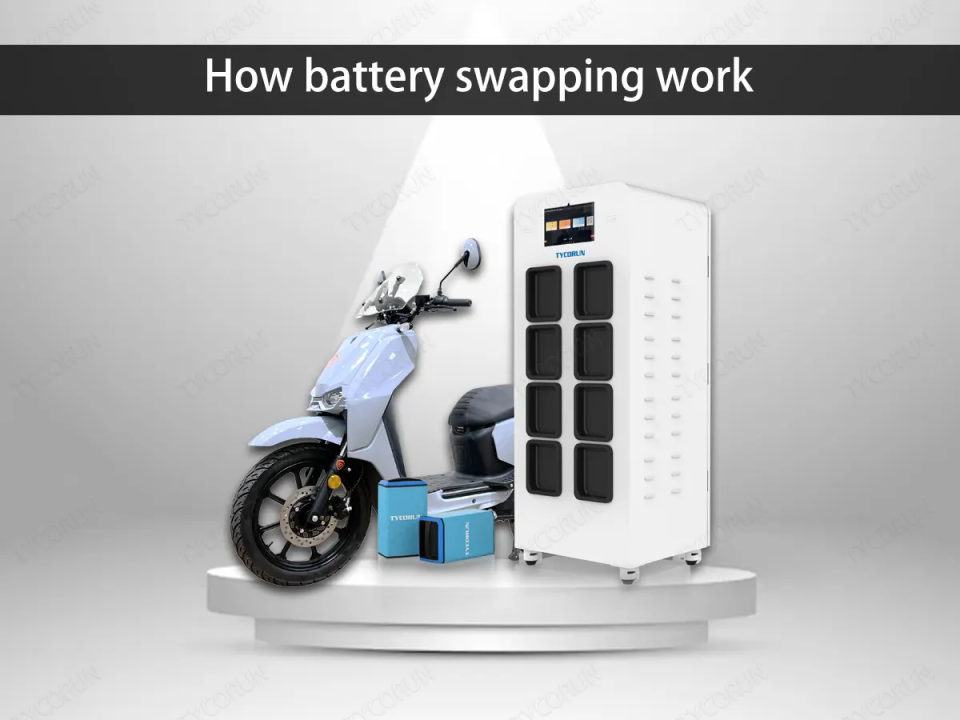MARKET OVERVIEW:
Global E-Bike Battery Swapping Station market is estimated to reach $1952.4 Million by 2030; growing at a CAGR of 20.1% from 2023 to 2030.
The Global E-Bike Battery Swapping Station market is changing the way electric bikes are powered, offering a convenient and efficient solution. Instead of waiting for hours to charge, riders can quickly swap batteries at stations, making e-bikes more user-friendly. This market not only provides quick energy, but also supports sustainable urban mobility by reducing carbon footprints. By strategically placing swapping stations, users can easily access charging points, addressing concerns about battery life and range anxiety.
The market also fosters a sense of community among e-bike enthusiasts, creating shared hubs for sustainability and innovation. This market represents a shift towards more efficient and eco-friendly urban mobility, offering a scalable solution for cities struggling with congestion and pollution. As the market continues to grow, it reflects a future where electric biking is synonymous with cleaner, greener, and more connected urban environments.
The Global E-Bike Battery Swapping Station market is not just about charging batteries; it symbolizes a larger vision of sustainable transportation that integrates technology and community for a more efficient and environmentally conscious future.

GROWTH FACTORS
The Global E-Bike Battery Swapping Station market is experiencing growth due to the rising popularity of e-bikes as a cost-effective and eco-friendly mode of transport. Increasing awareness of environmental sustainability and the need for energy-efficient commuting options is driving demand for e-bikes and the battery swapping infrastructure that supports them. Urbanization and traffic congestion issues are also contributing to the appeal of e-bikes, further boosting the market for battery swapping stations.
Challenges such as high setup costs, infrastructure requirements, battery disposal, and environmental impact need to be addressed for sustained growth. Government initiatives promoting electric mobility and offering incentives for charging infrastructure development are creating a favorable regulatory environment. The market sees potential for growth in technological advancements, particularly in battery technology, which can improve energy storage and charging capabilities.
Despite challenges, the market remains resilient with opportunities for innovation and competition. Strategic planning, investment, and responsible recycling initiatives are essential for long-term success. As the industry evolves, providing efficient and sustainable battery swapping solutions to consumers remains a focus for market players and investors, ensuring a promising future for the Global E-Bike Battery Swapping Station market.
MARKET SEGMENTATION
By Type
The Global E-Bike Battery Swapping Station market is divided into two main types: Manual and Automated. Manual involves users actively swapping batteries themselves, providing a hands-on experience. Automated, on the other hand, uses technology to automate the process, making it more convenient and efficient for users. Both types cater to different preferences within the e-bike community. Manual appeals to those who prefer a user-centric approach, while Automated is for those looking for a streamlined, tech-driven process.
These segmentation types not only reflect user preferences but also address efficiency and convenience. As the market evolves, these types play a vital role in meeting the diverse needs of e-bike users, ensuring the battery swapping experience aligns with individual preferences and technological expectations.
By Vehicle Type
The Global Market for E-Bike Battery Swapping Stations is divided into two main categories based on Vehicles Type: Electric Scooters and Electric Bikes. Electric scooters are popular for city commuting and benefit from the convenience of battery swapping. They are increasingly being used as a sustainable mode of transportation in congested urban areas. Electric Bikes, on the other hand, cater to a wider range of users, from commuters to recreational cyclists.
Battery swapping stations cater to the evolving needs of e-bike users, ensuring a quick and seamless exchange of batteries. This segmentation highlights the versatility of battery swapping technology across different electric mobility platforms, serving both compact electric scooters and the broader range of electric bikes. This categorization helps us understand how battery swapping stations can meet the changing needs of users in the shift towards sustainable urban mobility solutions.

By Battery Type
The Global E-Bike Battery Swapping Station market is shaped by the classification of battery types. Lithium-ion batteries are prevalent due to high energy density and longer lifespan, making them reliable and long-lasting power sources. Lead Acid batteries are durable and cost-effective, still relevant in markets focused on cost considerations.
The category labeled as Others includes various battery types to cater to specific requirements in the e-bike ecosystem, showcasing market adaptability. Segmentation based on battery type reflects the diverse choices available to consumers and manufacturers, blending established and emerging technologies. This classification emphasizes the industry's responsiveness to consumer preferences and needs, creating a dynamic landscape where different battery types play vital roles in the e-bike battery swapping station market.
REGIONAL ANALYSIS
The Global E-Bike Battery Swapping Station market is analyzed regionally to understand how different parts of the world are influencing the market.
- Asia-Pacific leads in this market due to rapid urbanization and environmental awareness, especially in countries like China and India with large populations.
- Europe follows closely, with a focus on sustainable transportation and green initiatives supported by governments to promote E-Bike Battery Swapping Stations.
- North America is seeing a rise in e-bike adoption due to a cultural shift towards healthier lifestyles.
- The Middle East and Africa show slower uptake due to economic and cultural factors, but as awareness grows, they are expected to contribute to the global market.
- Each region has its opportunities and challenges, highlighting the need for a tailored approach to navigate the global market successfully.
Regional dynamics like urbanization, environmental awareness, and governmental support shape the E-Bike Battery Swapping Station market globally.

KEY INDUSTRY PLAYERS
Key Competitive players operating in the E-Bike Battery Swapping Station industry include Nio Inc., Aulton New Energy Automotive Technology Co., Ltd., Sun Mobility Private Ltd., Gogoro Inc., Shenzhen Immotor Technology Co., Ltd, Ample Inc., Swobbee GmbH, Lithion Power Private Limited, Zynch, Esmito Solutions Pvt Ltd
REPORT SCOPE AND SEGMENTATION
|
Attributes |
Details |
|
Market Size By 2031 |
USD 1952.4 Million |
|
Growth Rate |
CAGR of 20.1% |
|
Forecast period |
2024 - 2031 |
|
Report Pages |
250+ |
|
By Type |
|
|
By Vehicle Type |
|
|
By Battery Type |
|
|
By Region |
|
|
Key Market Players |
|



_page-000137.jpg)
_page-000140.jpg)
_page-000139.jpg)
_page-000138.jpg)









 APAC:+91 7666513636
APAC:+91 7666513636





